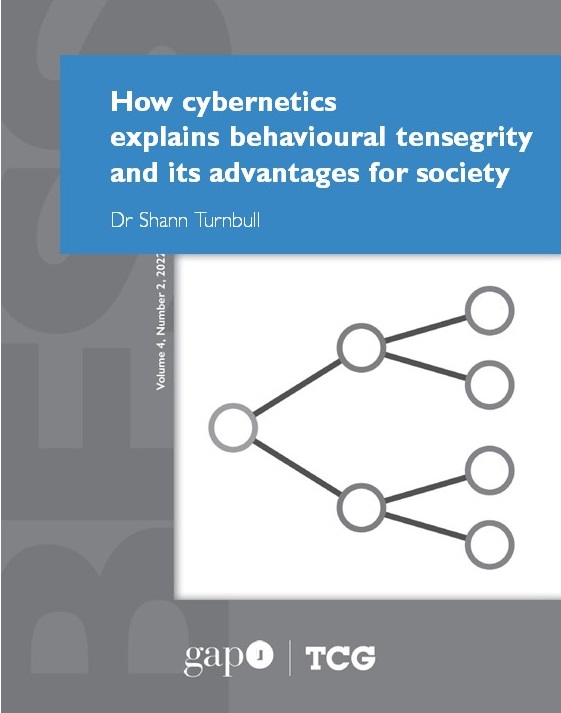How cybernetics explains behavioural tensegrity and its advantages for society
DOI:
https://doi.org/10.54337/ojs.bess.v4i2.7750Palabras clave:
amplifying control, ecological governance, explaining behaviour, evolution, global governance, governing complexity, organisational designResumen
This article explains the crucial role of the paradoxical dual contrary~complementary but interdependent properties of tensegrity. It is a neglected phenomenon in understanding how living things and their social organisations can become self-regulating and self-governing. Tensegrity is a defining feature of the architecture of nature. It is the driver of evolution. Organisations that include tensegrity into a polycentric self-governing process identified by Ostrom establish a basis from which to form an ecological form of governance for citizens to self-govern the sustainability of their host bioregions for the global common good. This requires engineering system scientists working with social scientists in educating students to become governance architects to custom design ecological firms. Research opportunities are identified in six hypotheses that include fundamental aspects of the universe.

Descargas
Publicado
Número
Sección
Licencia
Derechos de autor 2022 Dr Shann Turnbull

Esta obra está bajo una licencia internacional Creative Commons Reconocimiento-NoComercial-SinObraDerivada 3.0.
This journal provides immediate open access to its content on the principle that making research freely available to the public supports a greater global exchange of knowledge.
Articles published in BESS follow the license Creative Commons Attribution-NonCommercial-NoDerivs 3.0 Unported (CC BY-NC-ND 3.0)
Authors retain copyright and grant the journal right of first publication with the work simultaneously licensed under a Creative Commons Attribution License: Attribution - NonCommercial - NoDerivs (by-nc-nd).
Further information about Creative Commons




